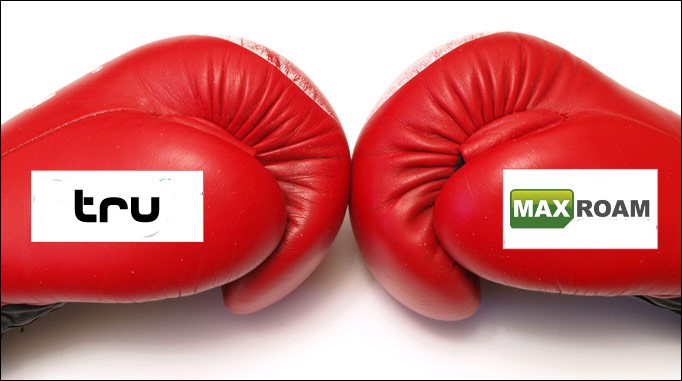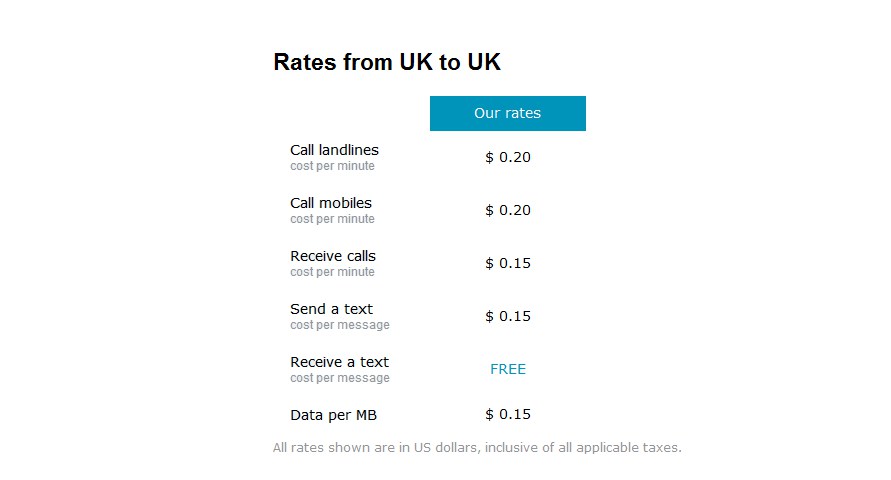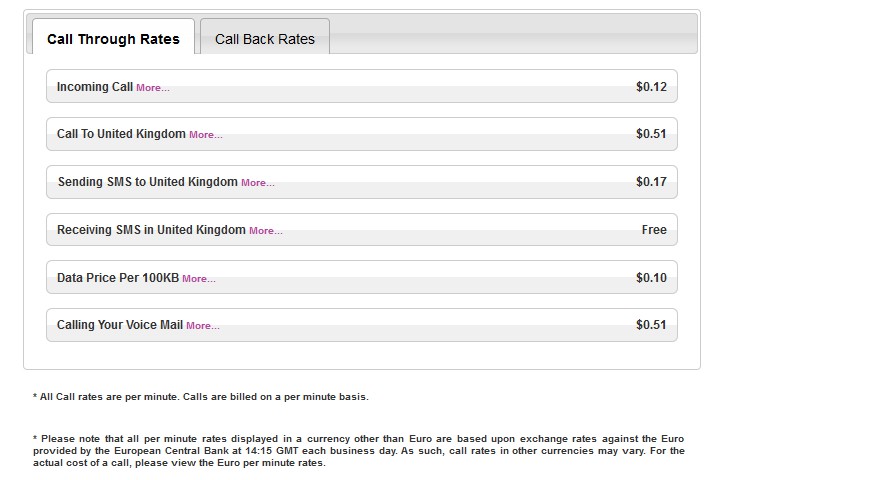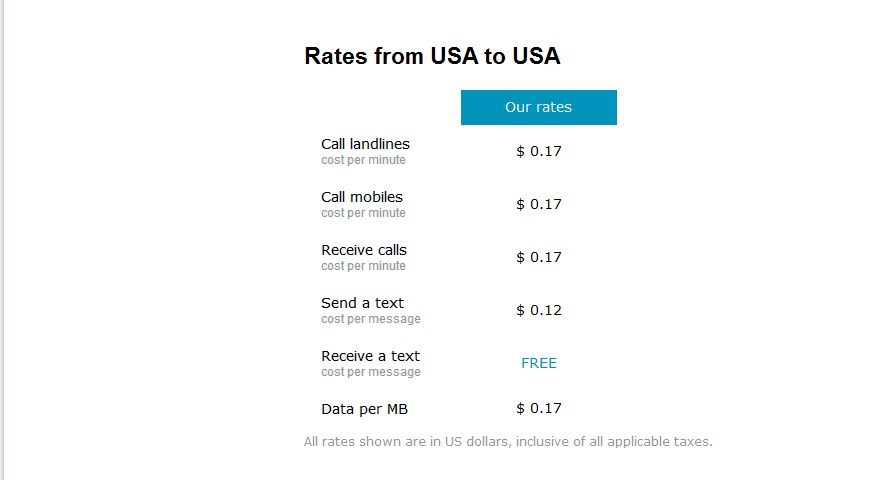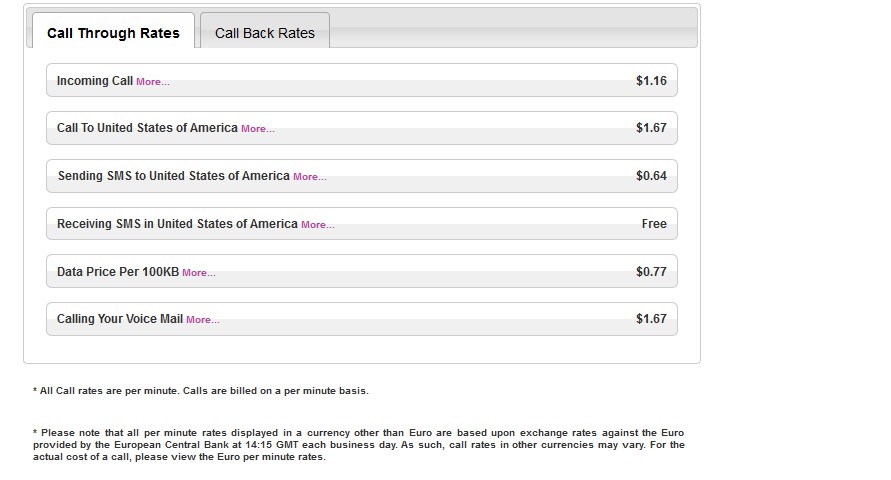Maxroam can safely be described as Tru‘s greatest competitor in the international roaming sector, although MaxRoam did not set up shop to compete directly with Tru. Still, they do compete in certain respects. Let’s break down the differences between the two.
First of all, the plans. Here are some screenshot comparisons from the Maxroam and Tru websites of rates for both Tru and MaxRoam in the UK:
It’s worth pointing out that MaxRoam prices in the UK do go down to as low as 1.5p per MB if customers purchase one of their data plans. In addition, they charge a flat rate for voice and data all across Europe. They also offer period data bundles, consisting of a Daily Pass (30MB for €9.00 GBP), a Weekly Pass (100MB for €29.00 GBP) and a Monthly Pass (200MB for €55.00 GBP).
- Price of sim packs. MAXROAM is 25% cheaper
- Price of calls in Europe to rest of world Maxroam is 20% cheaper
- Data in Europe, Maxroam is one third of the price
- Rates in UK Maxroam is 2c per minute cheaper and in bundle 1p v 10p per MB
- In Europe MAXROAM is 50% cheaper to receive calls
As for the USA:
As can be seen, the “Per-MB” rates for Tru are substantially lower than Maxroam in nearly all cases. For example, 1 MB of data in the UK for Maxroam would be about 0.63 GBP ($1.00 USD), while with Tru the same 1 MB would cost only 0.09 GBP (0.15 USD). Keep in mind that this is for “Per-MB” pricing and does not include Maxroam’s starter pack pricing and the bundles, both of which make Maxroam the better deal.
A more obvious differences come in the form of features. Tru offers both SIM Card and App services. Maxroam offers SIM only. This means customers don’t have to purchase a SIM card to enjoy the cheaper rates. That being said, both services work in over 230 countries where GSM services are available.
In addition, Tru has made MVNO deals with more operators than Maxroam, which does explain why their “per-MB” non-bundle rates are far cheaper, especially outside Europe. Tru plans on adding bundles to their plans to make things easier for customers as we previously reported. In addition, they will be releasing a new version of their App which will add additional features.
Both offer 24/7 customer support. Maxroam has dedicated numbers for their customer support teams in Europe, the UK, the USA, New Zealand, Australia, and Hong Kong. Tru has dedicated numbers for the UK, the USA, and Australia in addition to a dedicated Customer Service support code (707) that can be called from any country in the world without using minutes.
As for voicemail, if you look at the rates above, you can see that Maxroam charges higher prices for every minute you are using your voicemail. However, if you factor in the bundles, the overall price is cheaper than Truphone. Truphone, however, charges the normal outgoing call rate. One thing of note is that Truphone will notify you by e-mail when you get a new message, while Maxroam does not.
Another high point with Tru is the ability to add a local number for any country that can be called AND texted. It’s true that Maxroam offers something similar, but theirs is a “landline” number option, which means no text. However, this downside of Maxroam can be offset if you are using a service such as Google Voice, which allows you the use of a dedicated app to text with while maintaining the ability to make and receive calls.
Maxroam has been rated higher overall by organizations such as PC Magazine due to their higher-rated customer service. It has also been rated easier to set up overall. We also noted that Maxroam has a mobile version of their site where customers can manage their accounts. Tru, however, does not. While this might not be too much of a problem for tablet users, some smartphone users would prefer having a native mobile site, and we think it would be a great addition as well.
Overall, the biggest difference between the two is pricing and features. Maxroam wins in pricing overall while Truphone wins with features. When Truphone combines the Tru App and Tru SIM services in the future , it will create a much more obvious differentiation between the two. What is clear is what both companies are out to accomplish: the end of the “bill shock” era.

